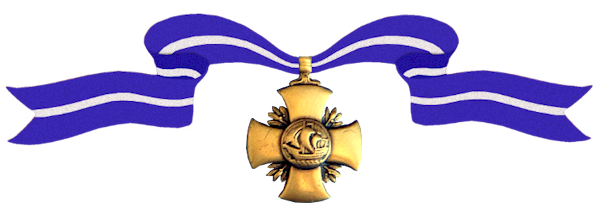John Whitney graduated from the U.S. Naval Academy at Annapolis, Class of 1922. He retired as a U.S. Navy Vice Admiral.

–
Cemetery:
Awards Received
-

Air Force Distinguished Service Medal
-

Navy Cross
-
Air Force Distinguished Service Medal
Service:
United States NavyRank:
Rear AdmiralAction Date:
January 25, 1948 – February 12, 1951
Department of the Air Force, General Orders No. 10 (1951), Correction: AF, GO No. 14 (March 12, 1951)The President of the United States of America, authorized by Act of Congress July 9, 1918, takes pleasure in presenting the Distinguished Service Medal (Air Force) to Rear Admiral John Perry Whitney (NSN: 0-57808), United States Navy, for exceptionally meritorious and distinguished services to the Government of the United States, in a duty of great responsibility as Vice Commander, Military Air Transport Service, during the period 25 January 1948 to 12 February 1951. Admiral Whitney was assigned to duty with the United States Air Force as the officer qualified by record and experience in the fields of administration and air transport operation to assist in the integration of all military air transport into a unified major air command. The transformation of the theory of unification into an efficiently functioning major air command is to a marked degree attributable to Admiral Whitney’s wisdom, understanding, judgment, and leadership. The brilliant role he portrayed as Senior Naval Representative in the establishment and direction of the unified Air Transport Service reflects great credit upon himself and the Armed Forces of the United States.
-
Navy Cross
Service:
United States NavyRank:
CaptainDivision:
U.S.S. Kitkun Bay (CVE-71)Action Date:
October 25, 1944
Commander 7th Fleet: Serial 0651 (February 9, 1945)The President of the United States of America takes pleasure in presenting the Navy Cross to Captain John Perry Whitney (NSN: 0-57808), United States Navy, for extraordinary heroism and distinguished service in the line of his profession as Commanding Officer of the Escort Carrier U.S.S. KITKUN BAY (CVE-71), during a running surface and air engagement with major elements of the Japanese Fleet near the Island of Samar in Philippine waters during the Battle of Leyte Gulf on 25 October 1944. The forces involved in this engagement consisted of a small United States Task Unit of six escort carriers, including the KITKUN BAY, three destroyers, and four destroyer escorts against a Japanese Task Force composed of an estimated force of four battleships, five heavy cruisers, three light cruisers, and about ten destroyers. This surface action in which he was engaged is without precedent in the annals of Naval Warfare both in composition of forces involved and numbers of enemy forces engaged. By his superb seamanship he constantly maneuvered his ship to avoid enemy shellfire with such outstanding skill that he brought his ship safely through the engagement virtually unscathed. His cool demeanor in the face of overwhelming odds was an inspiration to all hands. His courage and determination to fight his ship to its utmost was reflected in the spirit of his officers and men in launching aircraft and performing their other duties while shells were falling on all sides. While continuously exposed to strafing, shrapnel, and shellfire, he displayed the highest degree of bold, aggressive, and fearless leadership which was in keeping with the highest traditions of the United States Naval Service.

